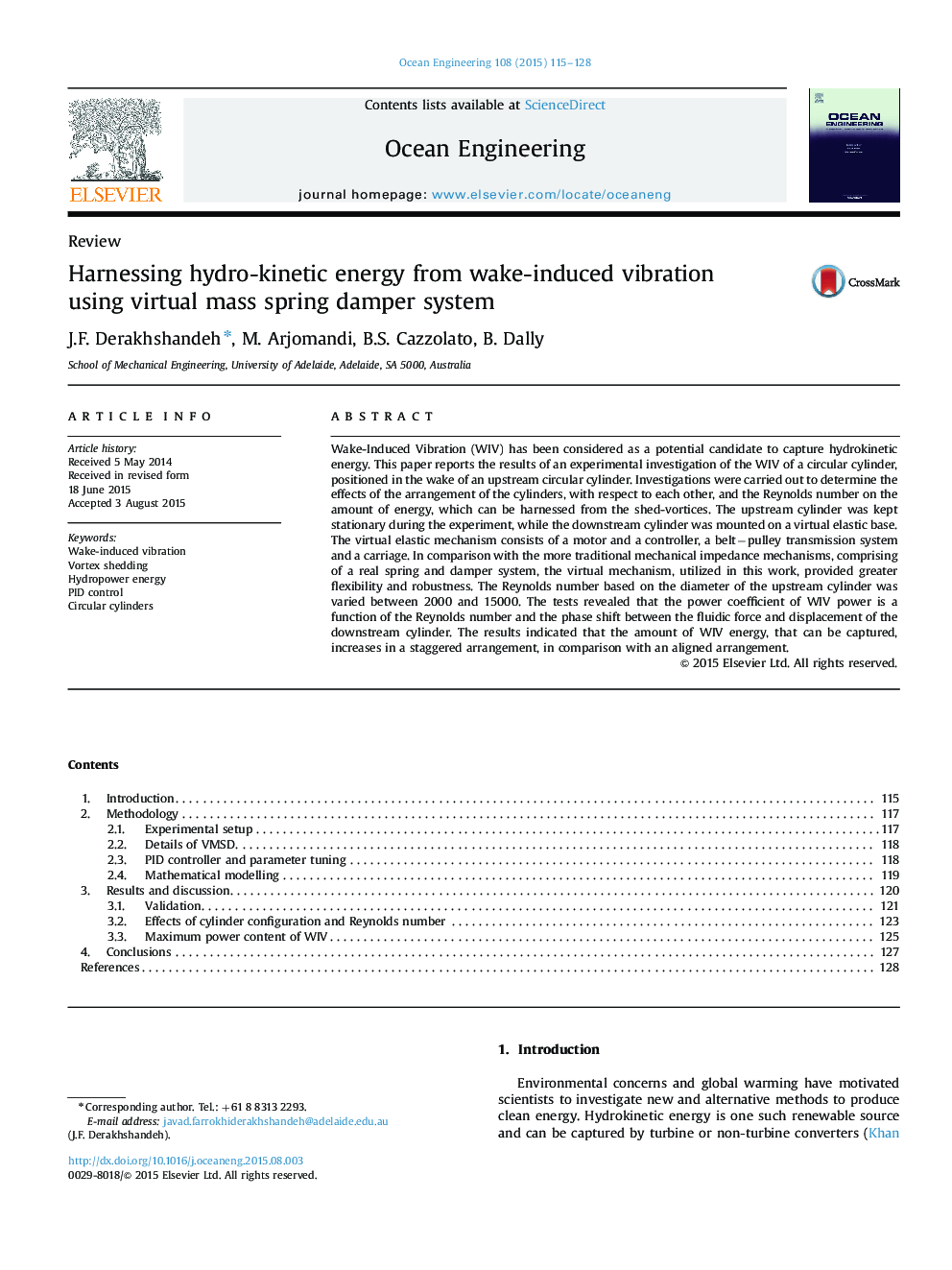| Article ID | Journal | Published Year | Pages | File Type |
|---|---|---|---|---|
| 8065371 | Ocean Engineering | 2015 | 14 Pages |
Abstract
Wake-Induced Vibration (WIV) has been considered as a potential candidate to capture hydrokinetic energy. This paper reports the results of an experimental investigation of the WIV of a circular cylinder, positioned in the wake of an upstream circular cylinder. Investigations were carried out to determine the effects of the arrangement of the cylinders, with respect to each other, and the Reynolds number on the amount of energy, which can be harnessed from the shed-vortices. The upstream cylinder was kept stationary during the experiment, while the downstream cylinder was mounted on a virtual elastic base. The virtual elastic mechanism consists of a motor and a controller, a beltâpulley transmission system and a carriage. In comparison with the more traditional mechanical impedance mechanisms, comprising of a real spring and damper system, the virtual mechanism, utilized in this work, provided greater flexibility and robustness. The Reynolds number based on the diameter of the upstream cylinder was varied between 2000 and 15000. The tests revealed that the power coefficient of WIV power is a function of the Reynolds number and the phase shift between the fluidic force and displacement of the downstream cylinder. The results indicated that the amount of WIV energy, that can be captured, increases in a staggered arrangement, in comparison with an aligned arrangement.
Related Topics
Physical Sciences and Engineering
Engineering
Ocean Engineering
Authors
J.F. Derakhshandeh, M. Arjomandi, B.S. Cazzolato, B. Dally,
